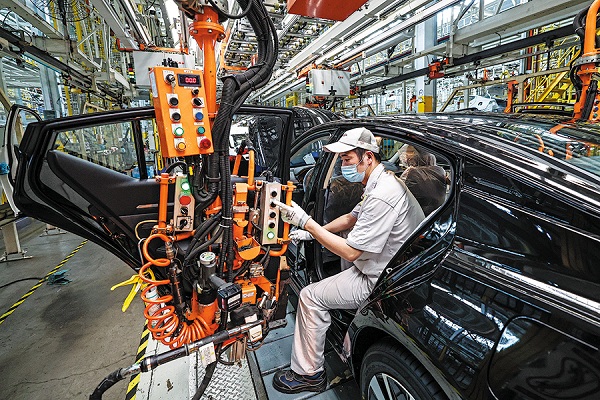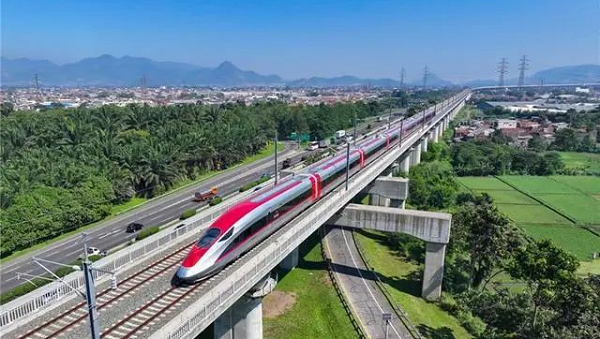Hubei emerging as Central China powerhouse

An employee works on the production line of an automaker in Xiangyang, Hubei province. [Photo by Yang Dong for China Daily]
Hubei province, severely hit by COVID-19 in 2020, has regained its growth momentum with technological innovation acting as one of the major drivers, and it has fueled high-quality development during the last decade in the province, officials said at a news conference in the provincial capital Wuhan on Friday.
Hubei, after controlling the outbreak of COVID-19 in 2020, reported a 39.2 percent drop in GDP during the first quarter of 2020. However, its GDP grew 12.9 percent last year to reach about 5 trillion yuan ($734 billion), said Wang Zhonglin, governor of Hubei.
The growth reached 4.5 percent from January to June, 2 percentage points higher than the national figure. First-half incomes of urban and rural residents grew by 5.8 percent and 8.5 percent, respectively, ranking third and second in the nation, Wang said.
He said the province, with its population of 61 million, will continue to work to control the pandemic in the shortest time frame and at a minimum cost, while ensuring stable and healthy economic development.
Among the engines fueling provincial growth, technological innovation is considered one of the most vital.
Wang said the number of high-tech companies in the province reached 14,500, having doubled in two years, and contributing 31 percent to industrial growth.
The province has witnessed some breakthrough achievements in state-of-the-art products and has attracted high-caliber talents. They include the world's first inactivated vaccine against COVID-19 and the country's first 128-layer flash memory chips with high bit density and high capacity among 3D NAND flash memory products.
Local companies and experts also contributed to several innovative inventions such as the BeiDou Navigation Satellite System and Shenzhou spacecraft, said Guo Yuanqiang, Party secretary of Wuhan.
Wuhan's investment in research and development accounted for 3.51 percent of its GDP in 2021, up from 2.66 percent 10 years ago. It has built 29 national key laboratories and five major tech infrastructure facilities focusing on areas such as remote sensing information engineering.
The number of high-tech companies in the city surged over tenfold during the past decade, and the added value of high-tech industries increased 2.5-fold, contributing to 27 percent of GDP.
At East Lake Science City, currently under construction, numerous unmanned aerial vehicles have been conducting daily automated inspections following programmed routes. They return and recharge themselves, while uploading data for intelligent analysis.
Liu Qi, founder of FL-Intelligence, said the unmanned system can be used to record construction progress, discover illegal behavior and ensure safe production.
Liu, who received a PhD from Huazhong University of Science and Technology in Wuhan, founded the company in 2016. Liu said Wuhan provides sound policies and solid support for his entrepreneurship.
Guo said the city will continue to solve "bottleneck" problems in chips and biosciences, develop new industries like digital economy, and use big data, cloud computing and artificial intelligence technologies to benefit people and boost digitalization and modern governance of the city.




